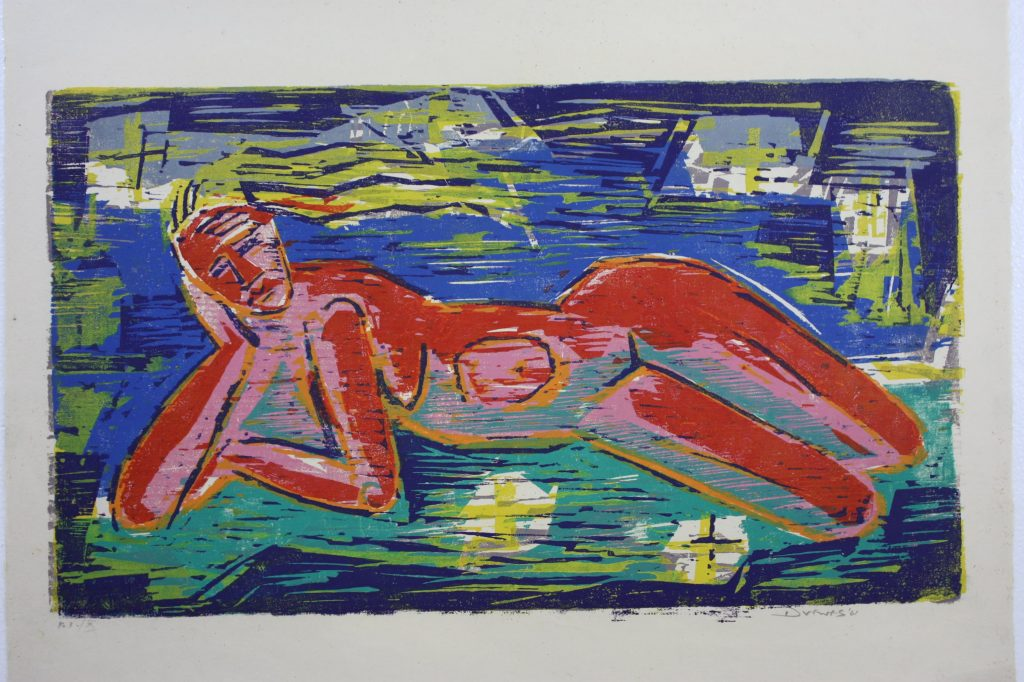Over the past year or so, I've developed a new passion and hobby in collecting art. I deeply resent this, since it flies in the face of one my cardinal life rules I've abided by for as long as I can remember: do not develop expensive tastes. And fine art is an expensive hobby.
Or is it? Well, yes, in many ways. But in other ways, it's ludicrously cheap. Let me explain.
First of all, I'm not talking about the headline-making auction prices of masterworks that involve more money than some countries' GDP. Robert Rauschenberg's "Buffalo II" silkscreen painting, for instance, auctioned for $88.1 million dollars in 2019. That is expensive under any definition. It's also functionally irrelevant to my life.
Go down to the other end of the spectrum. If I want to buy a decent-sized painting from an "emerging" artist -- a term that generally encompasses artists who have gallery representation but are at an early career stage, aren't in any museums or public collections, and haven't otherwise made any major "mark" in the art world -- it generally will cost in the low four-figures. That is expensive. It is a price I have paid for things, but it immediately becomes one of if not the most expensive thing in my house that I can physically lift with my own hands. At that price, there's not a lot of room for dabbling or experimenting or dilettantism. If I buy it, it better be something that I want on my wall for at least a decade.
And again, that's entry-level. What happens if you want to move up in the world?
Well, here's where the "ludicrously cheap" comes into play. Because you can absolutely get a Robert Rauschenberg print -- not a reproduction, a genuine, vetted, real-deal limited editioned Rauschenberg -- in that same price range. Earlier this year, Christie's auctioned a numbered Rauschenberg lithograph (edition of 31) from 1969 titled "Gulf" for $2,142. That is not cheap. But that is a price a normal human could imagine paying for something. My wife and I are financially doing reasonably well, but we are by no means 1-percenters. We couldn't toss out two grand on a lark. But could we do it periodically, for something we really loved? Yes, absolutely.
And Rauschenberg is an indisputable A-tier artist. What happens if you go the next step down?
This is a woodcut by Werner Drewes, titled "Goddess of the Night":
It was executed in 1961 as an edition of 10; one of those editions is in the Smithsonian's American Art Museum. Drewes himself is no small figure: he is credited with bringing the Bauhaus movement to America, and he coined the phrase "It Can't Happen Here" as the title of a 1934 portfolio of works critiquing the rise of fascist repression in his native Germany (Sinclair Lewis would use it a year later for the title of his famous book).
"Goddess of the Night" recently auctioned for $924. Two other Drewes woodcuts sold together as a lot at that same auction for $826.
There's just something about that particular price range that I can't wrap my head around. It is simultaneously so expensive, and so accessible. It's so expensive in the sense that it is a figure that I would need to think about, and I'm far more financially secure than the vast majority of Americans. It's so cheap in the sense that it's a figure I can feasibly pay, which feels absurd to me when we're talking about historically significant artists whose works are in major museums.


No comments:
Post a Comment